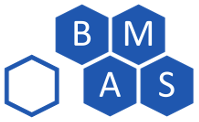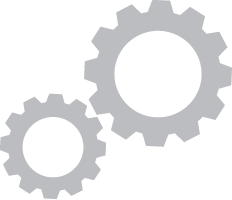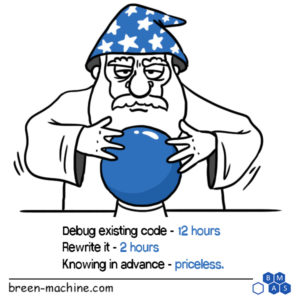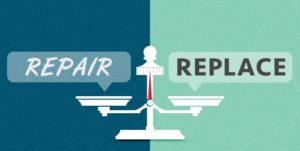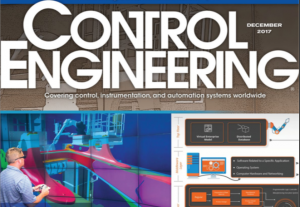This post is part of a series of thoughts from BMAS founder/owner Jon Breen on how we learn in industry and how that’s changing. Check out all the posts in our Brain Outside Your Brain series.
What happens if we try to apply Moore’s Law to educational needs in the workforce? It’s become the norm to take Moore’s Law out of the original context of transistors on a chip and to generally just mean accelerating returns.

From Past…
Imagine you’re a blacksmith living 500 years ago. You went through an apprenticeship, became a journeyman, and finally moved out to start your own shop as a master blacksmith. You put in your 10,000 hours of deliberate practice with the guidance of a master, and now you’re the master. But you may never surpass your teacher in speed or quality of work. The tools, materials, and techniques you use are virtually the same as what your teacher’s teacher used. You won’t be going to yearly seminars on the latest forge technology or getting continuing education credits learning about the latest advances in metallurgy. This is a slowly changing profession in a slowly changing time, where the most valuable blacksmiths have refined the age old techniques a little better than the rest.
To Future…
Fast forward to modern times and the landscape is quite different, particularly for professionals working with technology (let’s face it, that’s almost everyone). It frequently starts in a similar way… Some on-the-job experience with feedback on performance, perhaps precluded by a certificate or degree program. But technology changes so quickly now that it’s hard to imagine doing a job in a similar way to how my teachers were taught. It’s hard to even imagine doing my job the way it was done 15 years ago. Computer-based tools allow me to produce faster and with higher quality than an engineer could in the past, but they also require me to work differently, and that brings its own challenges. Technology and related standards are also rapidly changing around things like safety and efficiency. For a person in my shoes, that means technology has removed one set of burdens from my brain and added a whole new set – I don’t have to do mental math, but I need to be aware of changing standards. My job is changing while I’m in it. Today, the most valuable professionals are quick to learn and adapt to new responsibilities.
This is an extreme example to illustrate the point: We may think, “Obviously, work is different. That’s 500 years.” But if we went back 10,000 years, a 500-year difference probably wouldn’t have changed one’s occupation all that much, which brings up the next point: these changes are accelerating, much in the way that Moore’s Law describes the exponential growth of computing power. We humans intuitively understand linear patterns, but it’s harder to comprehend the effects of accelerating returns. Long story short, if technology is already changing your job faster than you can manage, it’s only going to get worse – and faster than you think.
Knowing that necessary job skills are coming and going at an accelerated rate, what can we do to ensure our success as individuals and teams? This is a multifaceted problem and will certainly have a multifaceted solution. Over the next few weeks, I’ll be exploring a few solutions that are already showing promise. Stay tuned!

About the Author
Jon is an engineer, entrepreneur, and teacher. His passion is creating and improving the systems that enhance human life, from automating repetitive tasks to empowering people in their careers. In his spare time, Jon enjoys engineering biological systems in his yard (gardening).
